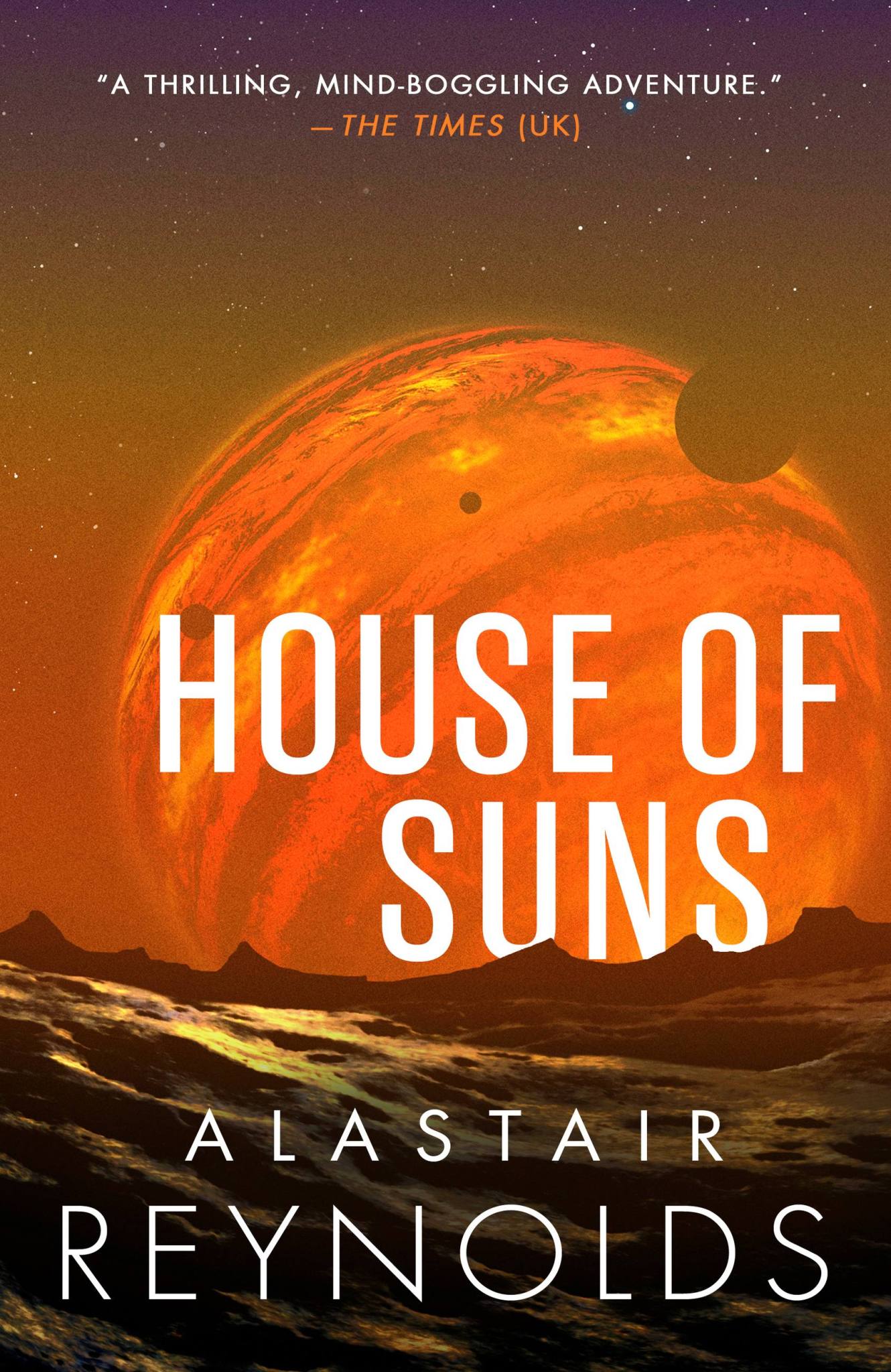House of Suns

Review
House of Suns is a standalone hard sci-fi book by . It tells the story of the Gentian Line, a family of clones who are betrayed, nearly wiped out, and must unravel what happened.
A chapter into House of Suns, it reminded me of The Quantum Thief, and not in a good way: a fantastically well-designed world filled with flat characters. It only got worse from there.
The writing is weak. Several times, after particularly bad paragraphs or stretches of dialogue, I put the book down, stared at the ceiling, and thought “An award-winning author wrote that…” The pacing is also uneven, with long, boring stretches. A skilled editor could have salvaged the story by cutting around 200 pages.
The characters were flat, and although they were mostly clones, I don’t believe it was the author’s intent to make them identical. But flat doesn’t do justice to their lack of dimension; they are mere points, not even one-dimensional. The two main characters—Campion and Purslane—alternate narration, but they are so similar that I could only tell whose chapter it was when the other one appeared.
The most interesting thing the book attempts is setting up a sci-fi universe where the speed of light is (almost) absolute.1 Travel and communication take a long time. Civilizations rise and fall while people are in transit. Actuarial estimates are used to predict if the destination will even exist in 50,000 years. I thought this was an excellent concept to explore, but House of Suns squandered it.
Because the story is a simple whodunit that takes place mostly on one planet, it didn’t need the vast universe. It didn’t need to and did not explore the implications of deep time. Instead, all the time that passed as the ships flew around felt like a diligent physics student answering questions for a final exam: “If a ship accelerates smoothly to 0.9c and then decelerates back to 0 over a 10,000ly trip, what amount of time passes for a) an outside observer, and b) the crew of the ship?” Who cares!
Like much of modern sci-fi, House of Suns pays homage to ’s The Book of the New Sun. The Curators are a direct homage to the Megatherians: they achieve immortality through constant physical growth, must live in fluid due to their size, and have vast knowledge. The planet Neume has a giant skull mountain reminiscent of Typhon’s mountain. The main city is Ymir, sharing a name with another character from The Book of the New Sun, and also referencing the giant whose body became the world in Norse mythology, just like the city is built on a giant stone hand.
Overall, a disappointing start, but if Reynolds can improve his writing, I may enjoy his next books. I will certainly give at least one more a shot.
-
At the very end of the book, faster-than-light travel becomes possible, but Reynolds invents a clever solution to preserve causality. That is one thing I can’t fault: the science is impeccable, as you would expect from an astronomer. ↩